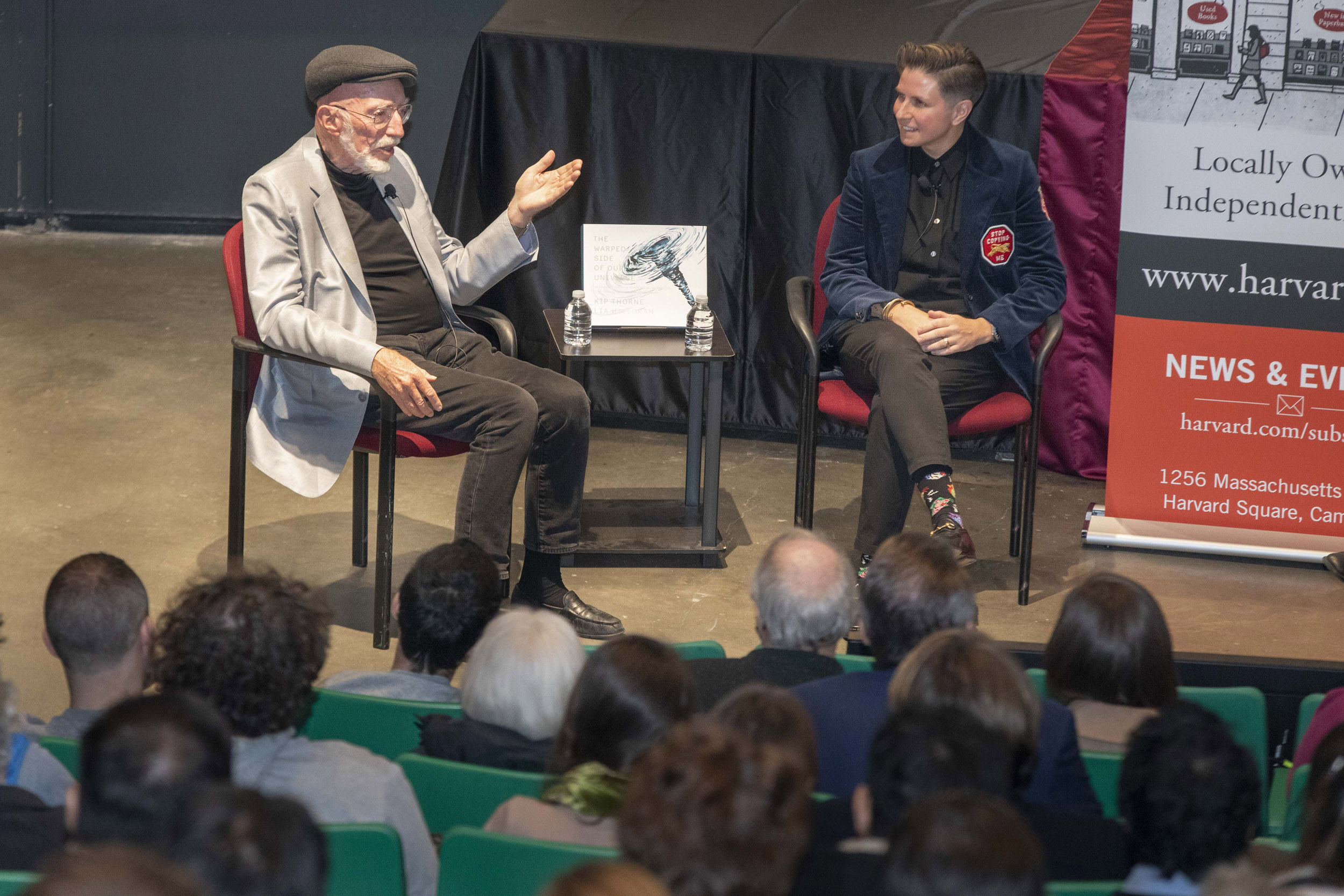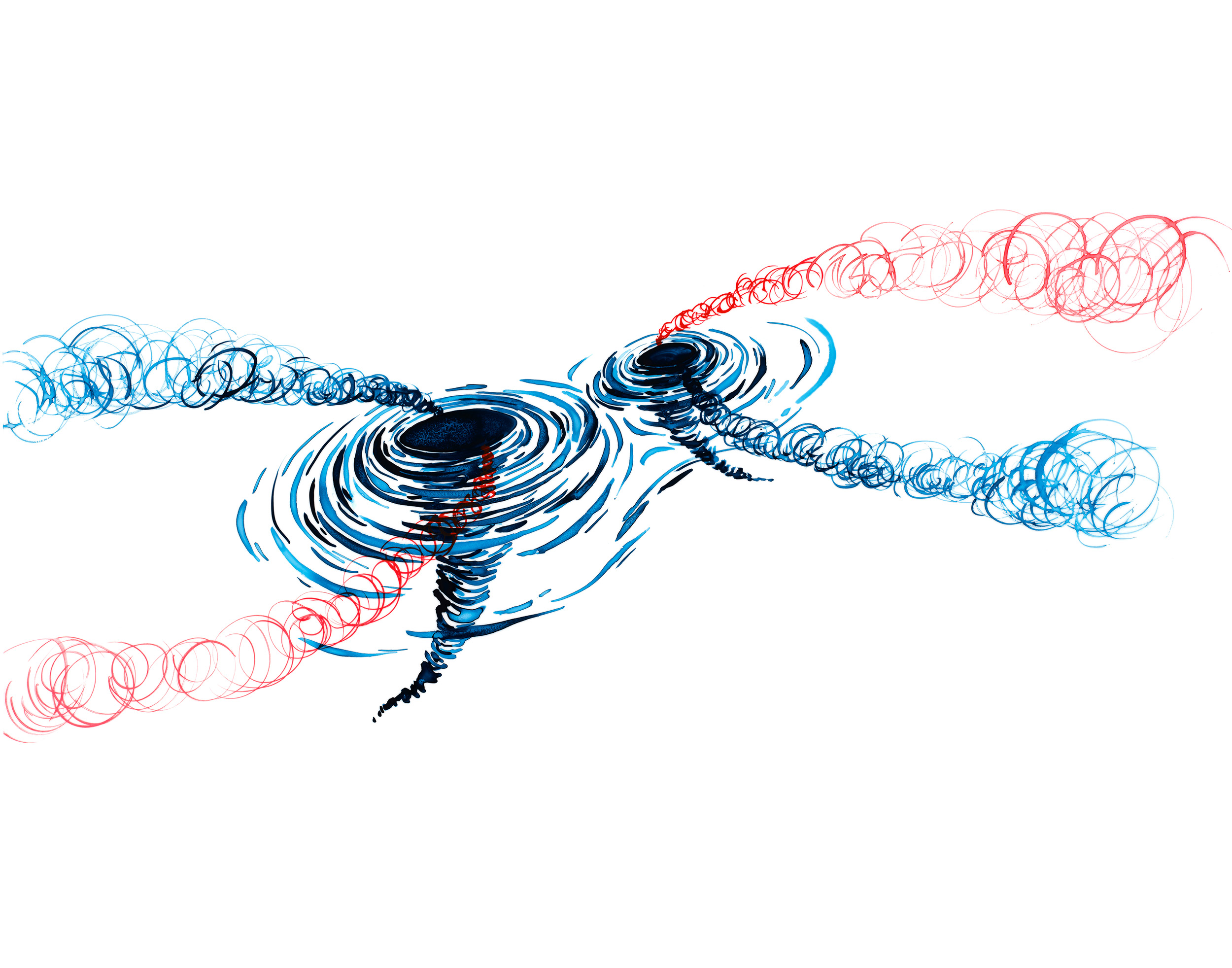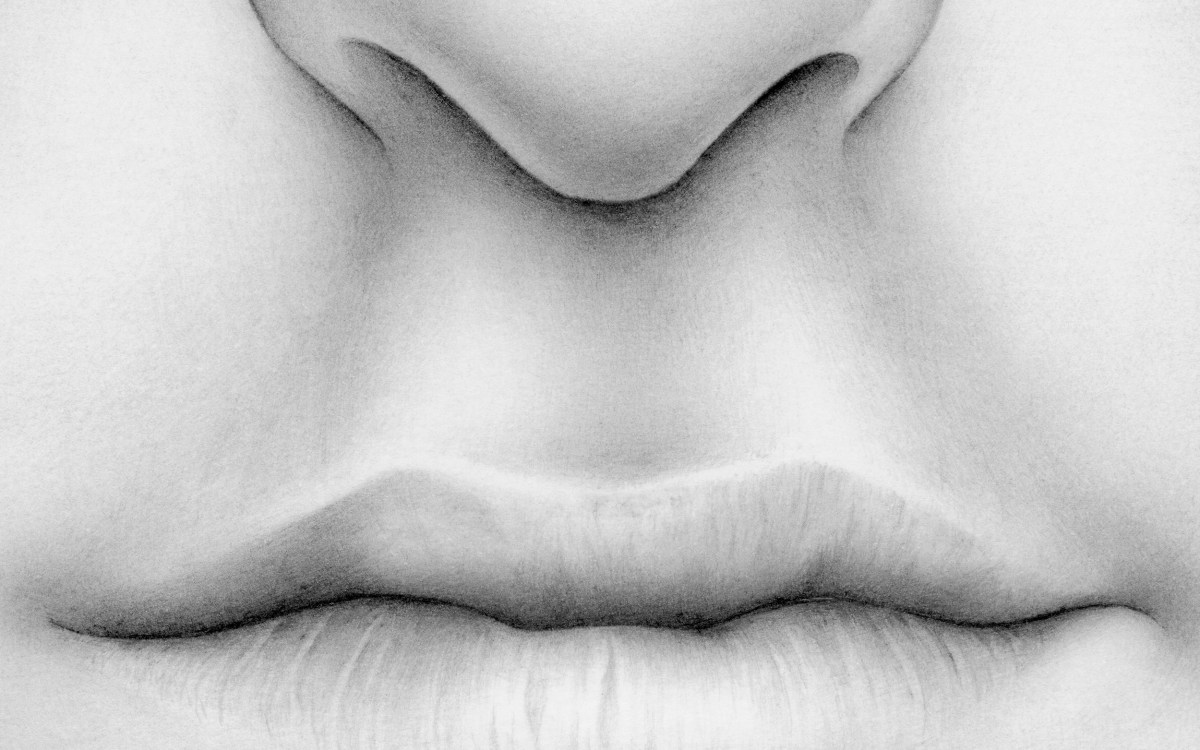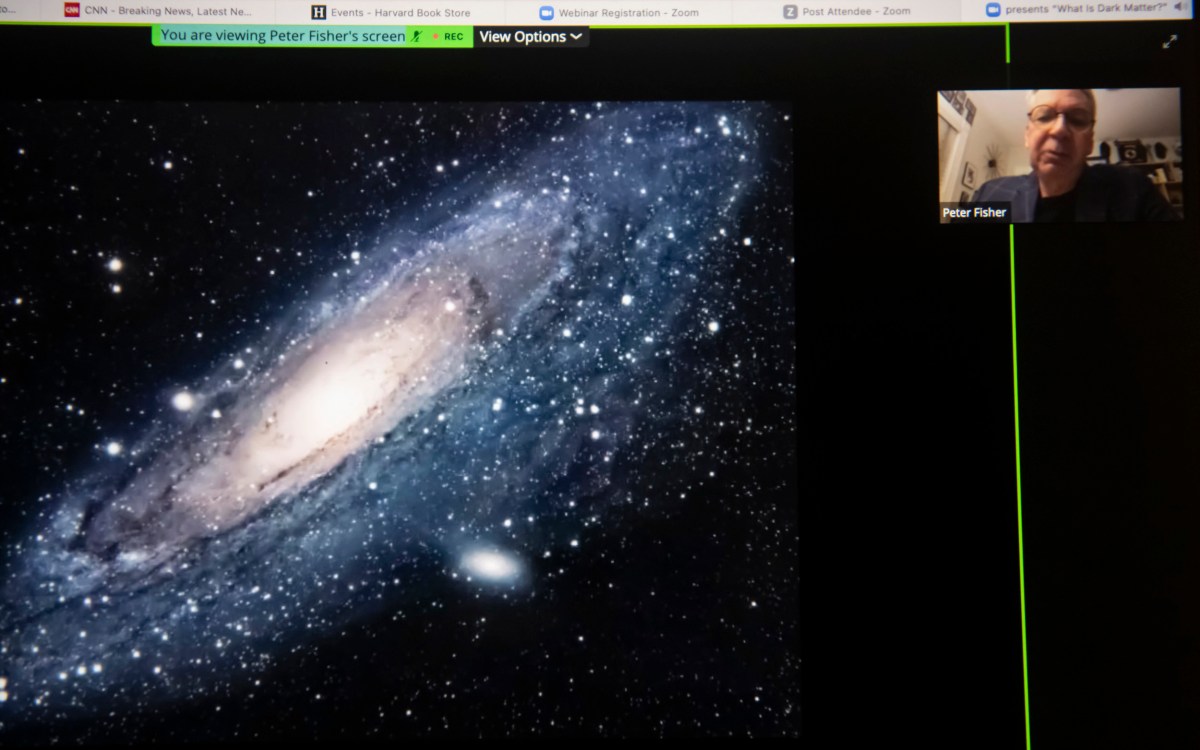
CalTech’s Kip Thorne and Chapman University’s Lia Halloran visit Harvard to discuss their collaboration.
Kris Snibbe/Harvard Staff Photographer
Nobel-winning physicist, artist illustrate universe’s ‘warped side’
New book seeks to demystify complex science from black holes to time travel
Nobel Prize-winning astrophysicist Kip Thorne has spent his career describing, through mathematics, some of the deepest mysteries of the universe. His latest project takes on similar material, but through poetry and paintings.
A nearly two-decade collaboration with artist Lia Halloran has extracted from Thorne’s brain the pictures that accompany those highly technical descriptions and brought them to life in their new book, “The Warped Side of the Universe: An Odyssey Through Black Holes, Wormholes, Time Travel, and Gravitational Waves.” The weighty tome blends complex science with whimsical art and features more than 300 ink-on-film paintings by Halloran alongside poetry by Thorne.
Thorne, the 2017 Nobel laureate in physics and emeritus theoretical physics professor at the California Institute of Technology, and Halloran, associate professor at Chapman University, shared the story behind their partnership at a Harvard Science Book Talk last week, moderated by MIT physicist and humanities Professor Alan Lightman (one of Thorne’s former students at CalTech).
The book, said Thorne, is not meant to teach the particulars of astrophysical concepts, but rather to “convey the essence of the ideas, the feeling, the experience of the ideas, without going into the technical details — like I do in my other life.”


Paintings that accompany the poems “A Black Hole is Made from Tendices/of Stretching and Squeezing Space and/ a Chaotic Singularity” and “When Orbiting Black Holes Collide:/Spiraling Vortices/ Morph into Gravity Waves.”
© 2023 by Lia Halloran
Halloran was introduced to Thorne seven years before they actually met — through his 1994 book “Black Holes and Time Warps: Einstein’s Outrageous Legacy,” a gift from her mother. Taking elective astronomy courses while an undergraduate art major at UCLA had stirred Halloran’s interest in astrophysics.
“I just loved the way these big ideas made me excited about understanding the natural world,” she said. Later, as an M.F.A. student at Yale, she based a printmaking project on the ideas from Thorne’s book.
Halloran was able to pitch Thorne on giving visual expression to his science through mutual acquaintances years later. At one of their first meetings, Thorne asked her to make a sketch depicting black holes and wormholes “for a young filmmaker.” That filmmaker was Steven Spielberg, who showed the drawings to Christopher Nolan, the eventual director of the 2014 epic space drama “Interstellar.” Thorne would serve as scientific consultant and executive producer of the movie, and he wrote a book about that process: “The Science of Interstellar.”
“Warped Side” is an outward expression of conversations between Thorne and Halloran over the last 13 years. Through poetry, Thorne distills scientific concepts like Einstein’s law of time warps, as well as innovations in astrophysics. Among things that feature prominently is the Laser Interferometer Gravitational-Wave Observatory, which Thorne co-founded 40 years ago, and for which he shared the Nobel Prize for the observation of gravitational waves.
Halloran’s wife, Felicia, is a frequent character throughout the book. In one piece, her ghostly figure is stretched and squeezed upward through a spinning black hole. “The wildly switching tendices/tear frantic Felicia apart/then rip up the atoms/from which she was made/–if the black hole is young,” reads Thorne’s accompanying verse.
The talk was sponsored by Harvard Book Store, the Division of Science, Harvard Library, and the Center for Astrophysics.
An exhibition of the artwork in “Warped Side” is on view at the gallery Luis De Jesus Los Angeles through Dec. 22.








